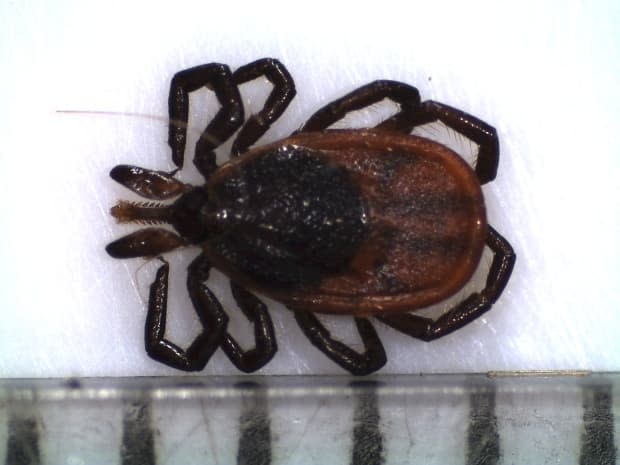How to repel ticks with plants and landscaping
Ticks are now present in many parts of the Maritimes, but communities are still learning how to live with them.
A tick-proofing conference and workshop at Mount Allison University on Saturday gave researchers and experts a chance to share knowledge about ways to protect humans, pets and backyards from the Lyme disease-carrying pests.
Vett Lloyd, a professor of biology at the university, has been studying ticks and tick-borne diseases for nearly a decade.
She says while Lyme disease is the most well-known tick-related illness, there are many others Maritimers should watch out for, including Powassan disease, which can cause meningitis, Anaplasmosis, which attacks the red blood cells and can cause anemia and internal bleeding, and spotted fever diseases.
Researchers are also watching Babesiosis, which is a malaria-like illness prevalent in Maine.
"Ticks are basically walking bags of pathogens," Lloyd said.
Ticks are here
Lloyd is one of the organizers of the conference. She said it's important to share community expertise on how to help minimize human contact with ticks, with numbers on the rise due climate change and other factors.
Most of southern New Brunswick has been deemed a Lyme disease risk by Public Health.
"Obviously, there's been a lot of work in terms of public health messaging about yes, ticks are here, watch out," she said.
"What we're doing that's different here is we're bringing together people from across the Maritimes … who are finding ways to repel them, ways to change their behaviour so they reduce encounters with ticks."

Common tick-disease prevention tips include wearing long pants and shirts when out in the woods, tucking pants into socks, wearing tick repellant and checking your body thoroughly after spending time outside.
As ticks become established in the area, more people are discovering tactics that help keep ticks out of the outdoor spaces they regularly inhabit, like yards and gardens.
Fight ticks with landscaping
Pamela Baltzer is a landscape contractor from Lunenburg, N.S., who presented at the conference. Baltzer first was exposed to the dangers of Lyme disease after her mother was infected 10 years ago.
Baltzer said there are many landscaping tactics that can help reduce the number of ticks in your yard, including maintenance, construction and plant choices.
She said the goal is ward off host animals, such as deer, mice and raccoons, which carry the ticks into areas where humans might come into contact with them.
Some plants that repel ticks and the animals that carry them include rosemary, chrysanthemum, mint, lemongrass, sage, lavender, garlic, onions, marigold, petunias, brown-eyed susan and juniper.
"By using them strategically, it helps to create a soft barrier, or at least a deterrent, to them coming into our yard," Baltzer said.

Tick-repelling landscaping solutions include stone or bark mulching, fencing, raised planters and stone paths.
"There's no one thing that provides a silver bullet solution. The idea is that we're integrating a whole host of variables that will strengthen the level of defence," Baltzer said.
Reduce tick-friendly environments
Even if you aren't planning on doing any landscaping anytime soon, Baltzer said there are still plenty of things homeowners can do to reduce contact with ticks while outdoors.
Most of it comes down to maintenance, like cleaning up leaf debris in the spring and fall, keeping trash and compost inside critter-proof containers, stacking your woodpile over dry surfaces like gravel or pressure treated timbers and keeping lawns mowed fairly short.

The goal is to limit moist, dark environments that attract ticks and their animal hosts.
Another tactic Baltzer recommends is getting rid of bird feeders or moving them to the edges of your property, since dropped bird seed attracts rodents and other tick-carrying animals.
More information on tick protection and the prevention of Lyme disease can be found online at the Department of Health website and at the Canadian Lyme Disease Foundation website.


